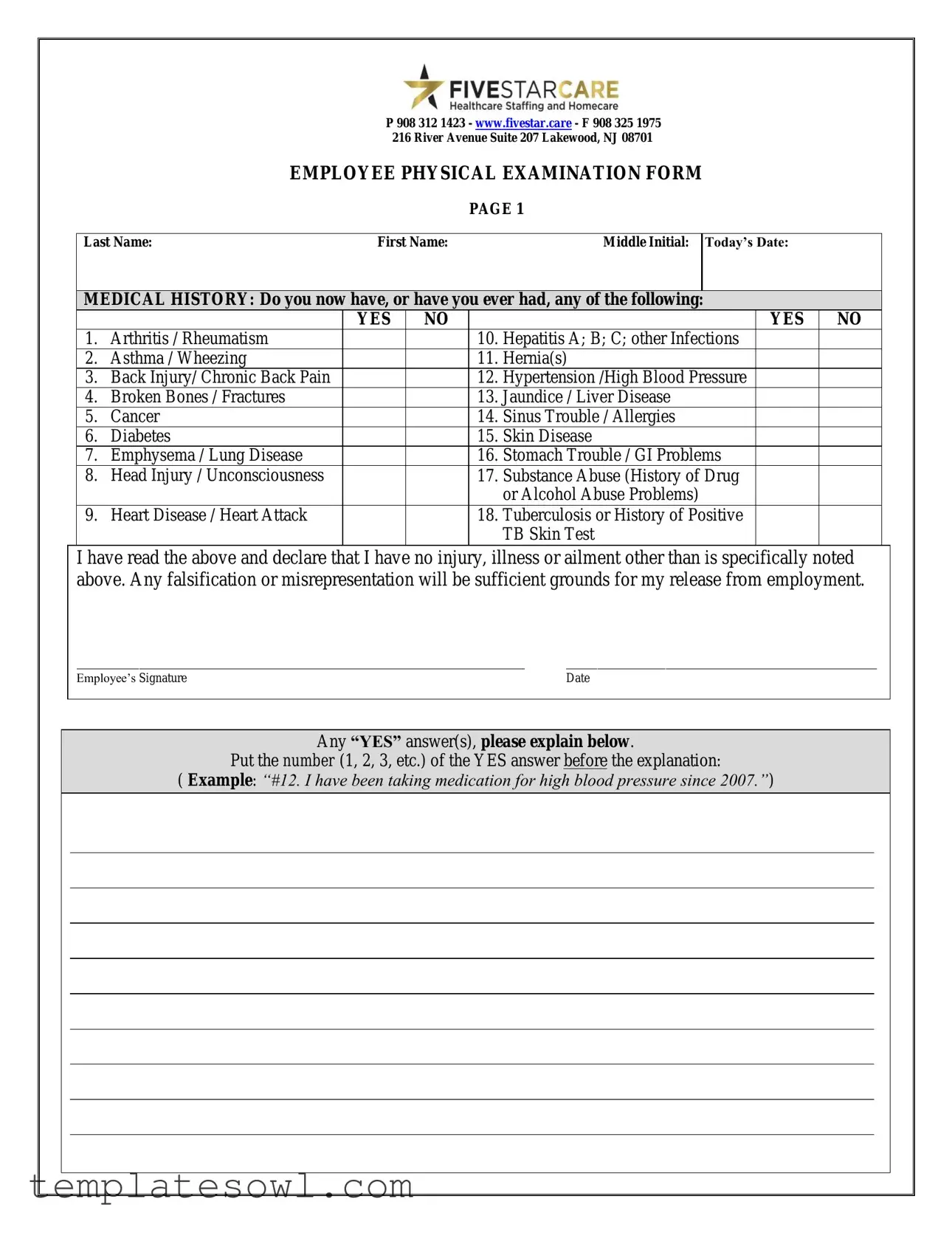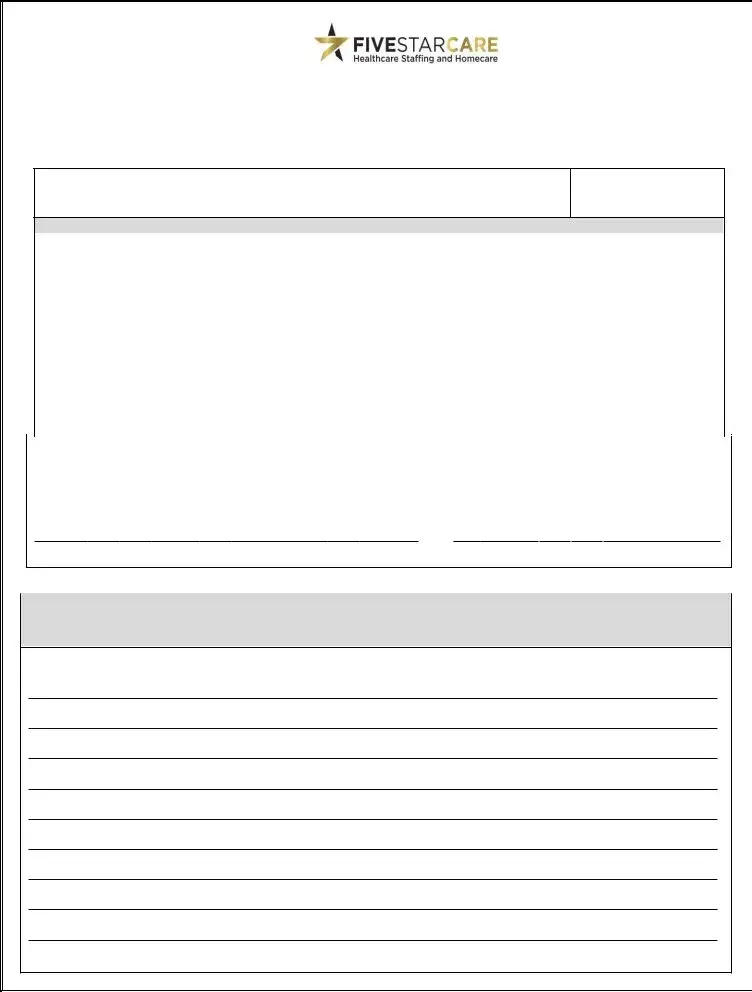What is the purpose of the Employee Physical Examination Form?
The Employee Physical Examination Form is designed to assess the health and fitness of an employee prior to entering or continuing employment. It collects important medical history, ensuring that individuals are capable of performing their job functions safely. This helps employers identify health concerns that could impact job performance or workplace safety.
What information is required on the form?
Employees must provide personal details such as their name, date of birth, and job title. The form also asks about medical history, including previous conditions like arthritis, asthma, or heart disease. Additionally, the physical examination section requires details about vital signs and overall health assessments, including the state of the skin, lungs, heart, and musculoskeletal system.
What should I do if I answer 'YES' to any of the medical history questions?
If you answer 'YES' to any question regarding your medical history, you should provide a detailed explanation in the space provided on the form. It is essential to include the corresponding question number. For instance, if you answer yes to having high blood pressure, you might write “#12. I have been taking medication for high blood pressure since 2007.” This ensures that any potential concerns are properly documented for evaluation.
What happens if there is any misrepresentation on the form?
Falsifying or misrepresenting information on the Employee Physical Examination Form can lead to serious consequences, including termination of employment. It is crucial to be honest and thorough in your responses. Employers rely on this information to maintain a safe and healthy work environment, and any discrepancies may jeopardize that goal.
Who examines the results of the physical examination?
A qualified physician will review the completed Employee Physical Examination Form. This professional assesses both the health history provided and the results from the physical examination. Based on their findings, they will determine if the applicant is fit for employment. Their signature on the form indicates their assessment and recommendation concerning the employee’s fitness for the job.


